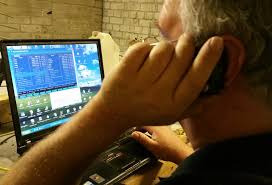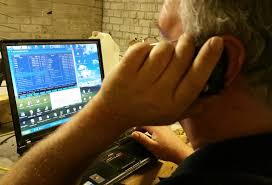
Decades ago, we used to take coffee breaks to escape, if only momentarily, from the stress of continually focusing on one task after another – with few distractions or variety in tasks to provide any mental relief. Today, we need “work breaks” to escape the incessant and cognitively demanding interruptions exacerbated by handheld electronic devices that make sufficient concentration and contemplation impossible.
Cal Newport used the term “deep work” to describe “the activities performed in a state of distraction-free concentration that push your cognitive capabilities to their limit.”
It’s true that we can develop our power of concentration by strengthening our brain-based executive skills, particularly those relating to sustained attention, task initiation and goal-directed persistence. In fact, I have already written an e-book titled “Strengthen your brain’s executive skills“, published by Bookboon.com, that suggests ways of doing this. But in most cases our working environment is anything but distraction-free. And few people can ignore the chiming of their handheld device or even the brief bleep that indicates a retweeted tweet or the arrival of an instant message.
In today’s typical work environment it is obvious that technology, our greatest asset, is also our greatest distractor – or at least aids and abets distractions from others. Cal Newport, in his book “Deep work: rules for focused success in a distracted world“, mentions a 2012 study that found the average knowledge worker spends more than 60% of the work week engaged in electronic communication and Internet searching. About 30% of this is simply reading and answering email. So unless you work in the wilderness where Internet or cellular access is impossible, the place to start is with your use of handheld electronic devices.
Assuming that people were continually connected, in a few of my articles and books I suggested that people take “work breaks” to get the significant things done. I suppose this could be called “deep work“. A “work break” is a scheduled block of time during the day when you put your iPhone or whatever on airplane mode and concentrate for about 90 minutes on a priority task or project.
The assumption is that the world and everybody in it can survive for 90 minutes without communicating with others in some way or another. In fact there have been no reported deaths, bankruptcies or even major setbacks reported when people have actually done this.
It is known as planning and scheduling. You simply block off 90 minutes of time in your planner two or more times a day as appointments with yourself to get specific priorities accomplished. (Either electronic or paper planners are acceptable.) What you are doing is treating yourself with the same degree of respect that you would afford to others, including clients and employees, when you schedule an appointment to discuss something specific – whether it is to decide on purchasing an item or to appraise someone’s performance. Seldom would you cancel an appointment at the last minute or not show up if another person were involved.
In 90 minutes you could accomplish much when interruptions are minimal. With electronics silenced, it is much easier to do this. You may have to move to a boardroom or close your office door or work from home; but it is not impossible. And as you increase your ability to focus (since you are alone and very capable of daydreaming) you will find that your productivity will increase as well.
I know it works for some people – including me. I usually write my books, articles, newsletters, tweets, etc. in 90-minute work sessions – perhaps two or three such sessions in a normal workday. The rest of the time is not completely wasted; but personal productivity is minimal.
Even 90 minutes of focused working a day is frequently enough to succeed at what you do.


Recent Comments